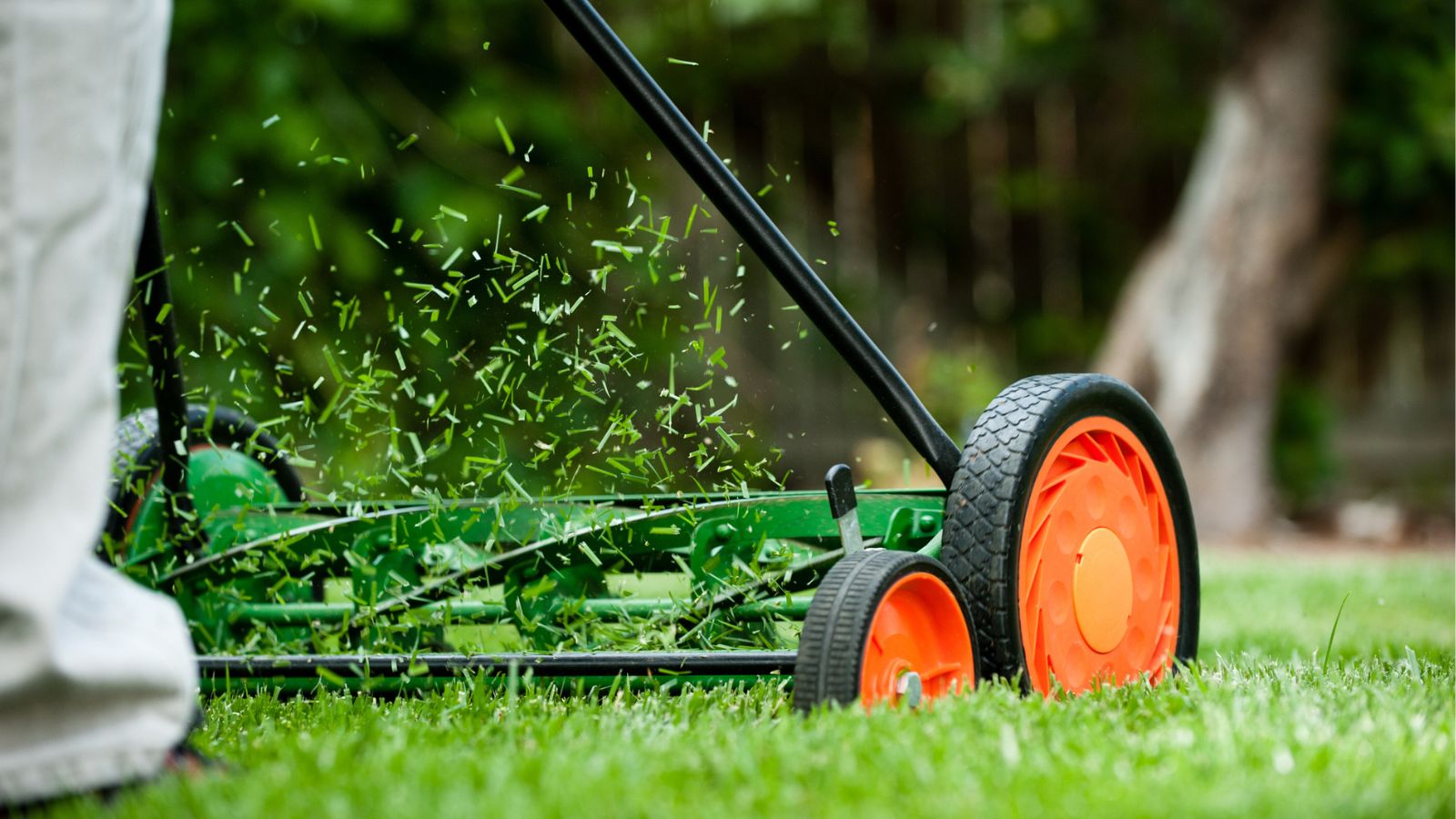What to do with grass clippings after mowing – garden experts have this vital advice
Save water, money and improve your garden's health and good looks by using grass clippings cleverly after you have mowed the lawn


If you are in the habit of gathering up grass clippings after mowing before bagging them up as yard waste, let us invite you to rethink.
Grass clippings created by mowing can, in most cases, be reused within your garden as a mulch, compost and even fertilizer. They break down quickly and are packed with nutrients that can feed everything from your lawn to your veg patch.
Below, we speak to gardening experts to discover what to do with grass clippings after mowing, and when you really should put them out with the waste.
What to do with grass clippings after mowing
Before you take out your lawn mower and gather up your rake, this is what you can do with grass clippings.
1. Leave them on the lawn
You can mulch a lawn with grass clippings.
‘This is a great way to save time and effort while taking care of your lawn,’ says Susan Brandt, co-founder of Blooming Secrets. ‘It can also help to reduce the amount of water you need to use and helps keep weeds at bay. Additionally, it can help improve the soil structure, meaning better grass growth in the long run.’
Using grass clippings as a lawn mulch can mean you are much less likely to have to rely on fertilizing a lawn or aerating your lawn to keep it looking lush, and it also makes for a healthier haven for insects and earthworms.
Design expertise in your inbox – from inspiring decorating ideas and beautiful celebrity homes to practical gardening advice and shopping round-ups.
John Thomas, author of the Backyardgardengeek.com, is at pains to point out that if you do so, ‘you need to make sure your lawn mower chops those clippings up fairly well – and to never leave clumps of clippings lying around – or else you might unintentionally damage your lawn.’
Don't worry that using grass clippings on a lawn after mowing will mean you have to dethatch it more often; as long as you mow regularly – we have more on how often you should mow a lawn – and the grass clippings aren't too long (more than an inch or so) or left in clumps (if it is, spread it out with a rake), it will not be a problem. Longer clippings can be removed with a rake, and then repurposed elsewhere.
2. Boost your compost heap
'Adding grass clippings to the compost is a wonderful way to help make nutrient-rich compost that can be used throughout the garden. Rich in nitrogen, one of the three main nutrients required for healthy plants, grass clippings can decompose quickly and release that nitrogen into the compost,' says our gardening expert Drew Swainston.
'Take care to only add grass clippings in small amounts and layer it with woodier material, such as leaves or straw. Layers of grass clippings that are too thick can turn slimy and unpleasant within the compost heap.'
A simple compost bin like Geobin's, at Amazon, is great for small garden composting.

Drew qualified as a journalist before studying for a horticulture qualification, after which he worked as a professional gardener for several years, specializing in kitchen gardening. He's now bringing his expertise and passion to Homes & Gardens as a member of our team.
3. Mulch plants
Mulching can help preserve water in flowerbeds, can suppress weed growth, and keep the soil warm when you mulch flower beds in fall. You can use grass clippings as a type of mulch, simply piling a couple of inches depth around flowers, plants and vegetables. You needn't turn the grass clippings into the soil if you don't want to: the weather and earthworms will do that job for you.
4. Improve soil health
'Grass clippings from mowing can be used as part of lasagna gardening techniques to improve soil health, particularly if it is a heavy clay, is sandy, or perhaps is simply poor quality and would benefit from the introduction of organic matter,' says Drew Swainston.
'Lasagna gardening is a fantastic organic no-dig gardening method that can reuse waste from both the garden and kitchen, including your grass clippings.
'Grass is a "green" material and, alongside other "green" types including plant and kitchen waste, is layered with "brown" materials like leaves or shredded newspaper to create nutrient-rich beds to grow a whole range of plants in.'
When to put grass clippings out as waste
Not all grass clippings can be returned to the garden after mowing. The instances when you need to be careful are when you have sprayed your lawn with a weed killer to tackle disease, or if your lawn is full of weeds, which would then spring up where you have spread the clippings. Equally, if it is very long when cut, you should compost rather than spread grass clippings on the lawn to allow them to break down; clumpy, heavy, wet grass clippings will suffocate a lawn.
GardenMate's 3-pack 72 gallon reusable garden waste bags (at Amazon) can cope with lawns of all sizes.
FAQs
Are grass clippings good for the lawn?
Grass clippings no more than an inch long, spread evenly over a lawn, are really good for it, providing the soil with a natural nitrogen fertilizer that you might usually have to apply. Grass clippings can also, in this way, help you repair patches in lawns, reduce watering and can protect the lawn from scorching in hot weather.
How long do grass clippings last?
Grass clippings usually last around a month before they decompose. Ensure you turn them with other materials within the compost heap to help promote decomposition.
How can I compost grass clippings fast?
Add dried materials such as wood chips, and turn your compost regularly; this encourages aeration which will speed up composting. Watering a compost heap when it dries out will also help keep the rate of decomposition regular.
There is one further way to use grass clippings after mowing: by allowing them to dry out completely, then spreading them around plants that slugs and snails love to eat. They find it difficult to navigate the bristly nature of dried grass so are more likely to leave your precious plants alone.

For the past 20 years, Beth has worked for and contributed to a number of leading magazines and websites in the UK, including Real Homes, Ideal Home, Period Living and Grand Designs. She was the Editor in Chief of Gardeningetc.com for nearly three years and is now the the Head of Gardens at Homes & Gardens. Beth's own garden is a really important part of her family's home, and she loves spending time tending to her veg patch or entertaining friends and family at a summer BBQ or alfresco pizza night.